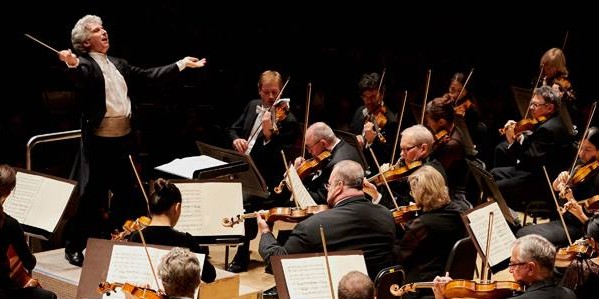Nearly a year-and-a-half into his mandate to “modernize” the Toronto Symphony Orchestra’s (TSO) consumer outreach, vice-president of marketing David Postill has successfully optimized its media mix and introduced several initiatives that put digital first everywhere, but the stage.
“When I got in we stepped back and looked at the whole digital landscape and said ‘How do we rebuild and modernize this space with a view to creating excellent relationships with our customers?’” said Postill, a former agency executive with Y&R and BBDO whose role with the TSO encompasses sales, marketing and customer experience.
“Every customer wants more efficiency in purchasing and a better online experience, and we hadn’t been investing in the digital space for a long time.”
Prior to joining the TSO in January 2015, Postill ran his own brand consultancy, Starting Lane Strategy Group; before that, he spent 18 months as VP of marketing with Ocean Nutrition Canada.
While the TSO has retained some traditional media vehicles including direct mail, print inserts and radio, more than one quarter (26%) of its annual $4.8 million marketing budget is now dedicated to digital media. That is up from just 1% when Postill arrived, with plans to break the 30% threshold next year.
One of Postill’s first priorities was re-launching the TSO website with an emphasis on mobile functionality, followed by layering in both display and search engine marketing, overhauling its email marketing and embracing what he called “relationship-enriching” technology.
Last week, for example, the TSO introduced online chat functionality to its website, enabling patrons to receive real-time customer support in both official languages as well as other languages including Mandarin. Its first week in operation produced more than 200 chat sessions.
“I’m chanting this mantra of being digital-first in everything we do,” said Postill. “It isn’t a strategy, it’s a way of approaching the market; everything we do has to flow from this thought of adding to the conversation, improving relationships and facilitating sales.”
So far, the results have borne out the strategy, with the TSO set to grow its audience for the first time in six years. It has enjoyed 30 sold-out performances year to date – including 12 consecutive full houses – while attracting 20,000 first-time symphony-goers. About 60% of the TSA’s ticket sales are now conducted digitally, up from 18% in less than a year. said Postill. The organization’s “bulls-eye” target, said Postill, is women 42.
“It’s been a huge turnaround, and I attribute it all to the digital marketing we’re doing,” said Postill. “Everything is performing and converting at high levels, even compared to my private-sector experience. The metrics are astonishing for us.”
He said the TSO was also in the “early-going” of a content marketing strategy that would prioritize social media, and has begun filming performances and back-stage activity to populate its various social feeds. “I would say we’ve taken the first step in a much more serious content play for us,” he said.
A recent partnership with the Polaris Music Prize, meanwhile, is helping the TSO reach contemporary music fans. During the September awards ceremony, TSO musicians gave an orchestral performance of Toronto rapper Drake’s “Know Yourself.”
“It’s a great way of connecting with a new audience that is very passionate and serious about music,” said Postill. “There’s quite a debate in the classical world about being who we are, performing that rich old canon of classical music that everyone knows at a world-class level and being a big deal to a small audience.
“We have to be way more progressive and experimental, and frankly our musicians love it,” he continued. “Beethoven and Mozart were huge disruptors in their day, so we think we’re being more true to the essence of classical music.”
The TSO has also partnered with Zoomer Media to create a one-hour radio show called Sunday Night With the TSO that airs weekly on Classical 96.3 FM and attracts up to 40,000 listeners.
The TSO recently won a $7.5 million government grant to create a soundtrack for Canada’s upcoming 150th birthday in 2017. “It’s a huge win for us,” said Postill of the funding, which will go towards a pan-Canadian project called the Canada Mosaic.
“There’s no question there’s been a sea change in Ottawa, and the arts community is feeling it,” he added. About 20% of the TSO’s operating budget comes via government agencies, with roughly 50% coming through ticket sales and the remainder arriving through philanthropic efforts.
The TSO has no agency of record, but has worked with Toronto-based branding firm Haft2 that brand identify refreshed look and feel, while the Halifax digital agency Mode oversaw its website redesign. It also works with National PR.











